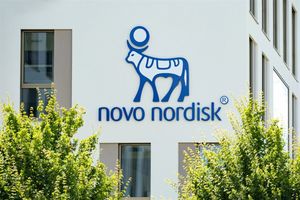Strange feelings in your legs and feet? You probably want to ask your doctor about it
 (NewsUSA)
(NewsUSA) - For older Americans who smoke or have diabetes or high blood pressure, leg pain could signal a problem with blood flow and needs to be checked by a doctor.
- For older Americans who smoke or have diabetes or high blood pressure, leg pain could signal a problem with blood flow and needs to be checked by a doctor.
Peripheral artery disease, or PAD, is a potentially life-threatening condition that occurs when blood vessels that carry blood away from the heart become narrow. The most common type of PAD affects the legs and feet.
Typical symptoms of PAD include sensations of burning, aching, numbness, fatigue, or pain in the leg or hip muscles while walking and occur when blocked arteries keep the legs from getting the blood flow they need.
Many people are unaware they have it, according to experts at the American Heart Association. Left untreated, PAD can increase your risk of heart attack and stroke. In extreme cases, limb amputation is needed. Peripheral artery disease affects about 8.5 million American adults, with Black people disproportionately facing diagnosis and greater likelihood of amputation.
Fortunately, early detection can reduce the risk of complications.
“It’s important for people who are risk for PAD to talk to their doctors about their concerns, and especially important to ask their doctor to check the pulses in their feet,” said Dr. Natalie Evans, an American Heart Association volunteer expert serving on the national PAD Collaborative.
Several strategies to manage PAD include:
- Stop smoking. Smoking is a risk factor for PAD and can lead to complications for people diagnosed with PAD.
- Get moving. Physical activity is a way to potentially prevent and treat PAD. Even if you have been diagnosed with PAD, regular exercise should be part of your treatment plan. Follow your doctor’s advice and start slowly.
- Eat well. Good nutrition is important for health and weight management. Many people with PAD also have high cholesterol, and a diet low in saturated fat can help lower cholesterol and reduce the risk of PAD complications.
-- Manage blood sugar. People with type 2 diabetes are at increased risk for PAD, but consistent blood sugar management can help reduce their risk.
-- Take medication as prescribed.
“Medications and walking exercise are usually the first-line treatments for people with PAD, but some people may need to have more invasive procedures to restore blood flow, like a stent that’s put inside the blood vessel or a bypass surgery,” said Evans, a vascular medicine specialist at University Hospitals Harrington Heart and Vascular Institute in Cleveland, and assistant professor of medicine at Case Western Reserve University School of Medicine.
“Unfortunately, sometimes people with severe PAD can lose a toe, foot, or leg due to amputation,” she said. “This is the thing my patients with PAD often worry about the most. The good news is that for most people, if we can catch PAD early we can prevent this worst-case scenario. That’s why it’s important to educate people about PAD. I also recommend that patients with PAD work with specialists who are trained in treating vascular disease.”
The bottom line: Take off your shoes and socks at a medical checkup and tell your doctor if you have any concerns about pain or discomfort in your legs and feet.
Visit heart.org/PAD for more information about the signs and symptoms of PAD.
More News
View More




Recent Quotes
View More
Quotes delayed at least 20 minutes.
By accessing this page, you agree to the Privacy Policy and Terms Of Service.